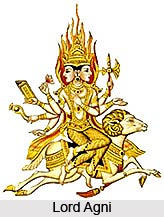 There are thirty five hymns in Book I of Atharva Veda. The first hymn is dedicated to Vachaspati asking for knowledge. The second hymn is regarding the disease of dysentery. The third hymns speak of constipation and urine suppression. The fourth hymn is regarding the prosperity of cattle for which lot of water is required. The fifth hymn says about water as it is important in order to gain strength. The sixth one is attributed to water again as it is required for health and wealth. The seventh hymn is dedicated to Lord Indra and Agni so that evil spirits can be identified and destroyed. Next hymn is dedicated to Lords Indra, Brihaspati, Soma and Agni in order to destroy magic. The ninth hymn is regarding King`s protection. The tenth hymn is on remission of sin.
There are thirty five hymns in Book I of Atharva Veda. The first hymn is dedicated to Vachaspati asking for knowledge. The second hymn is regarding the disease of dysentery. The third hymns speak of constipation and urine suppression. The fourth hymn is regarding the prosperity of cattle for which lot of water is required. The fifth hymn says about water as it is important in order to gain strength. The sixth one is attributed to water again as it is required for health and wealth. The seventh hymn is dedicated to Lord Indra and Agni so that evil spirits can be identified and destroyed. Next hymn is dedicated to Lords Indra, Brihaspati, Soma and Agni in order to destroy magic. The ninth hymn is regarding King`s protection. The tenth hymn is on remission of sin.
The eleventh hymn is used for a successful child birth. The twelfth hymn is a prayer to Lightning, headache fever and cough. The thirteenth one is a prayer to lightning in order to get happiness. The fourteenth one is a woman`s ritual recitation against a rival. The fifteenth hymn is a prayer for the prosperity of one who performs sacrifices. The sixteenth hymn is a prayer for protection against demons. The seventeenth one is a hymn while doing an incision in the vein. The eighteenth hymn is a prayer to seek protection against evil spirits for prosperity. Hymn nineteen is a chanting for protection from enemies and harmful arrows during war. Eighteenth hymn is a prayer to all the Lords which include Soma, Mitra, Varuna and Marut.
The twenty first hymn is an invocation to Lord Indra. Next hymn is regarding protection against the disease of Jaundice. Twenty third and twenty fourth hymns are prayers for guard against leprosy. Twenty fifth hymn is also a prayer for safety against fever. The twenty sixth hymn is a prayer for over protection prosperity and guidance. Next hymn is a prayer for invisibility. The succeeding hymn is again an invocation to Lord Agni for destruction against evil spirits. Twenty ninth hymn is to get the supremacy of King who has been dethroned. Thirtieth hymn is a benediction o a King on his consecration.
Next hymn is again a prayer for wealth and protection. The thirty second hymn is a prayer praising Heaven and earth. Next hymn is also a prayer to the waters for over all prosperity. The penultimate hymn is on a young man`s love. The last hymn is a prayer to ensure long life as well as bringing glory to those who wear amulets.
These thirty five hymns depict the society of that time. Hymns on magic, evil spirits and poisonous arrows are examples. However the ultimate aim of all the hymns is protection and prosperity.



















